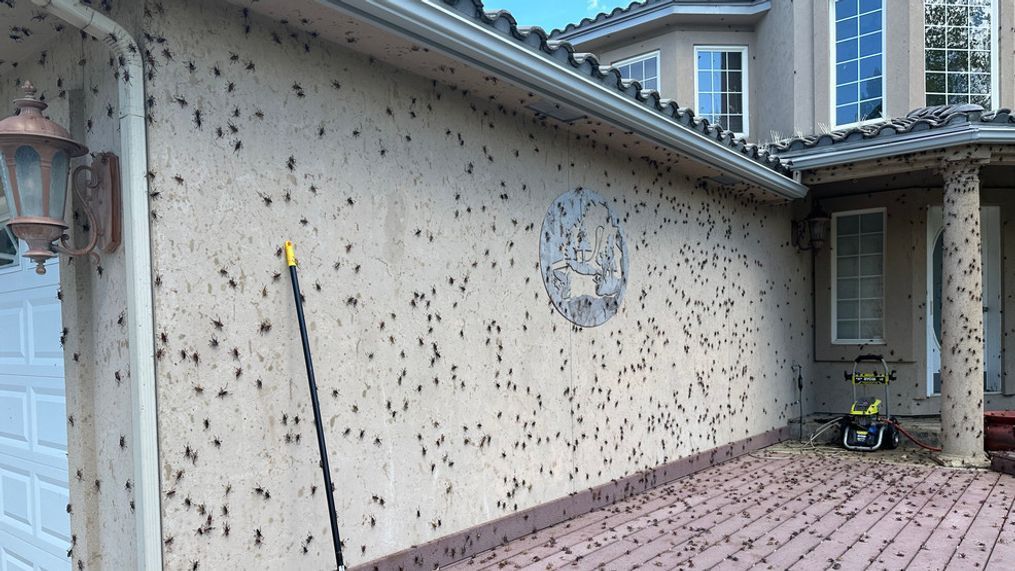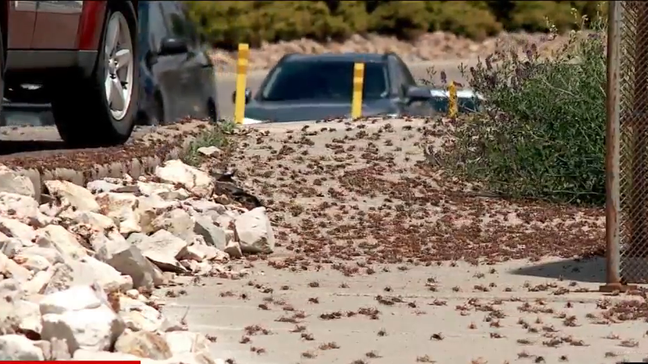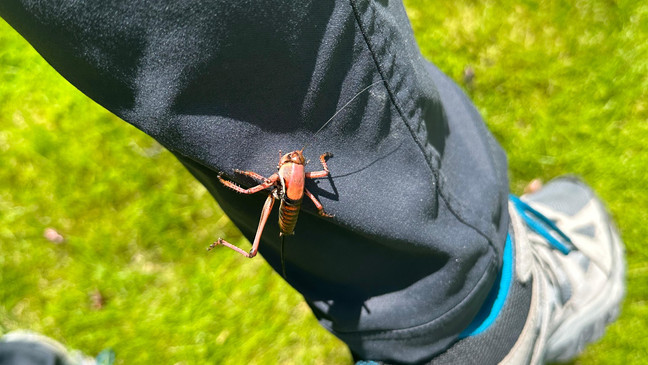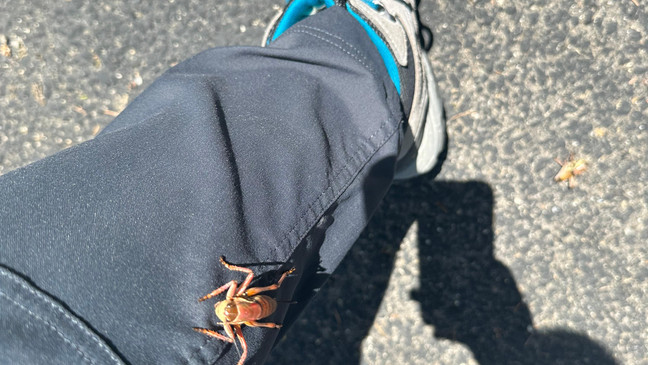Mormon crickets create creepy, crawly nuisance in Elko invasion
ELKO, Nev. (KUTV) — Residents in Elko, Nevada are dealing with a nuisance that inspires some creative adjectives. Some have referred to it as biblical. Others are calling it a plague. Still others says it’s an invasion or infestation.
“It’s bugging me,” said Elko resident Colette Reynolds. “It’s really bugging me.”
There’s an obvious pun in her words, but Reynolds really means it.
Her home, along with other parts of Elko, have been overtaken by a swarm of migrating Mormon crickets.
“I cried. I freaked out,” she said, recalling the first time she noticed the insects. “Elko gets the migration through town annually but never anything like this. When we looked out our front door, the whole wall was just covered. That really, really freaked me out.”
The insects can be found everywhere. On Wednesday, a swarm could be seen in parking lots and on busy roads near the Big 5 Sporting Goods store. Stephanie Garrett recalls the first time she saw them on the road.
“At first, I didn’t know what it was,” she said. “You’re just like, what is that? Then you can see that they’re moving and crawling and the whole road is crawling. It just makes your skin crawl. It’s just so gross.”
Mormon crickets aren’t technically crickets. They’re members of the katydid family, but they can’t fly. They also don’t bite or sting. But they can cause widespread damage to crops and other vegetation. They’re also just big and scary looking to many people.
“It causes depression and anxiety,” said Reynolds. “When you’re inside the house it sounds like it’s raining because they just randomly let go of wherever they’re hanging on and drop. It makes it difficult to eat. I haven’t slept. It’s just a really intrusive feeling.”
Mormon cricket swarms and migrations aren’t anything new. They’ve been seen across the western United States. Utah has seen several high profile swarms in recent decades.
Jeff Knight, the Nevada state entomologist, says the swarms are just noticed more when they’re in populated areas.
“We’ve moved more and more into the native habitat of where these crickets normally occur,” said Knight.
Mormon crickets don’t always move around in swarms. Knight says it’s unclear why they sometimes gather in massive quantities to migrate together. He also says options for dealing with them are limited.
“There is a pesticide route if people want to go that route,” said Knight. “There’s a route of tolerate as well and they’ll probably move through.”
Knight says some property owners can also use what’s known as cricket fences. Mormon crickets aren’t able to climb such fences and will instead go around them.
Reynolds is hoping to stick it out and just tolerate them.
“Some people say they’ll move through in three to five days,” she said. “But for some reason, they’re really sticking around our house. I’m not sure why.”
The insects can also create hazards on the road. As they migrate across roads, they’re inevitably hit by vehicles. The resulting mess of crushed insects can create slippery conditions for vehicles.
Longtime residents of Elko may have seen the insects before, but Garrett hasn’t gotten used to them. She’s only been in Elko for about a year.
“Locals that have been here forever are like, ‘oh it’s just the crickets, it happens every year,’” she said. “Then people like me who haven’t been here as long are like what? There are crickets everywhere. It’s terrible.”
Other big swarms have also been recently spotted in parts of southwest Idaho and southeast Oregon.



